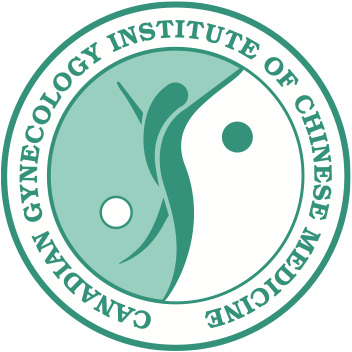The Basis of TCM Gynecology: Regulation of the Menstrual Cycle.
One of the topics that interested me most in my integrated gynecology class with Yuxiang Wang, R.TCMP at the CGICM was the physiology of the menstrual cycle. In Chinese Medicine, the regulation of the menstrual cycle is one of the main treatment principles for all women in their child bearing years. For women, the stability of the menstrual cycle is the root of their entire system and affects the regulation of the whole body. Why? Good question. The state of the menstrual cycle shows us the state of the ascending/descending functions of the body, the exiting and entering functions of the body, if there is proper and unimpeded flow of Qi in the body, a sufficient amount of Blood in the body and the state of the Blood in the body (whether it is deficient, has heat, is stagnant, etc.). By regulating the menstrual cycle, we can help conditions such as infertility, recurrent miscarriage, heavy menses, prolonged menses, no menses, painful periods, PMS, etc., not to mention many other seemingly unrelated conditions such as anxiety, depression, low energy, and many more.
In the normal menstrual cycle, there is an orderly cyclical hormone production with a parallel proliferation of the uterine lining in preparation for implantation of the embryo. A normal menstrual cycle lasts from 21 to 35 days, with 2 to 6 days of flow and an average blood loss of 20 to 60 ml. The normal menstrual cycle can be divided into two segments: the ovarian cycle and the uterine cycle, based on the organ under examination. The ovarian cycle may be further divided into follicular and luteal phase, whereas the uterine cycle is divided into corresponding proliferation and secretary phase menses.
Ovarian Cycle:
Follicular Phase: hormone feedback promotes the orderly development of a single dominant follicle, which should be mature at midcycle and prepared for ovulation. The average length of the follicular phase ranges from10 to 14 days, and variability in this length is responsible for most variations in total cycle length.
Luteal Phase: the time from ovulation to the onset of menses, with an average length 14 days.
Uterine Cycle:
Proliferative Phase: characterized by progressive mitotic growth of the deciduas functionalis for implantation of the embryo in response to rising circulating levels of estrogen.
Secretory Phase: in the typical 28-day cycle, ovulation occurs on cycle day 14, within 48 to 72 hours following ovulation, the onset of progesterone secretion produces a shift in the histological appearance of the endometrium to the secretory phase.
Menses: in the absence of implantation, glandular secretion ceases and an irregular breakdown of the decicua functionlis occurs. The result is a shedding of this layer of the endometrium, a process termed menses. By convention, the first day of vaginal bleeding is called day 1 of the menstrual cycle.
Basic Physiology:
- GnRH is produced in the arcuate nucleus of the hypothalamus and secreted in a pulsatile fashion into portal circulation, where it travels to the anterior pituitary.
- Ovarian follicular development moves from a period of gonadotropin independence to a phase of FSH dependence.
- As the corpus luteum of the previous cycle fades, luteal production of progesterone and inhibin A decreases, allowing FSH levels to rise.
- In response to FSH stimulus, the follicles grow and differentiate and secrete increasing amounts of estrogen.
- Estrogens stimulate growth and differentiation of the functional layer of the endometrium, which prepares for implantation. Estrogens work with FSH in stimulating follicular development.
- The two-cell two-gonadotropin theory dictates that with LH stimulation the ovarian theca cells will produce androgens that are converted by the granulosa cells into estrogens under the stimulus of FSH.
- Rising estrogen levels negatively feed back on the pituitary gland and hypothalamus and decrease the secretion of FSH.
- The one follicle destined to ovulate each cycle is called the dominant follicle. It has relatively more FSH receptors and produces a large concentration of estrogens than the follicles that will undergo atresia. It is able to continue to grow despite falling FSH levels.
- Sustained high estrogen levels cause a surge in pituitary LH secretion that triggers ovulation, progesterone production, and the shift to the secretory, or luteal, phase.
- Luteal function is dependent on the presence of LH. Without continued LH secretion, the corpus luteum will regress after 12 to 16 days.
- If pregnancy occurs, the embryo secretes hCG, which mimics the action of LH by sustaining the corpus luteum. The corpus luteum continues to secrete progesterone and supports the secretory endometrium, allowing the pregnancy to continue to develop.
This shows a basic picture:
This western medicine perspective allows you to better understand the TCM perspective:
As you can see, in TCM the cycle is broken down into four parts. The menstrual phase, postmenstrual phase, ovulation phase and premenstrual phase. Each of these phases has its own treatment principles:
- Menstrual Phase: regulate Qi, remove Blood stasis
- Postmenstrual Phase: nourish Kidney Yin, strengthen Kidney Yang
- Ovulation Phase: tonify the Kidney, activate Blood circulation
- Premenstrual Phase: tonify the Kidney and Liver, regulate Chong and Ren
By balancing the menstrual cycle we are also helping to balance the hormonal system within the body, helping to balance the body now and also preventing future imbalances as can happen in a menopausal syndrome.
For more information, please check out our Integrated Gynecology Course or contact us.
Caroline Prodoehl, D.Ac.
References:
Wang, Yuxiang. (2010). Integrated Gynecology Course Notes. TorontoSchoolof Traditional Chinese Medicine.


